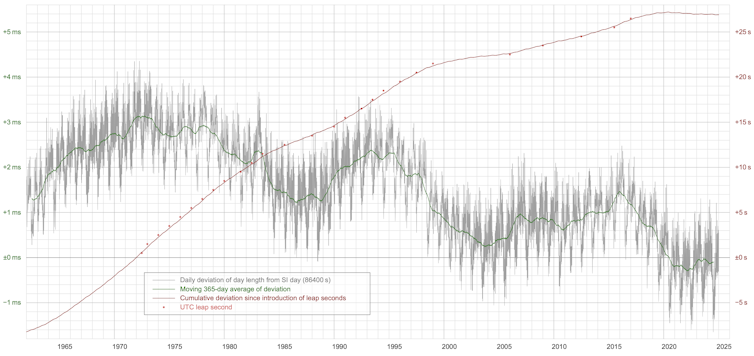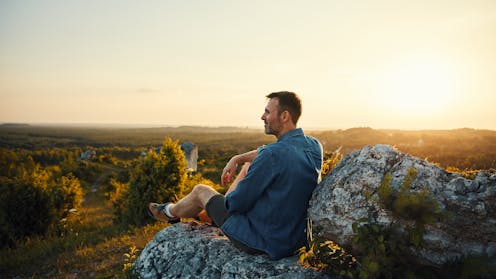Source: The Conversation – UK – By Dan Baumgardt, Senior Lecturer, School of Physiology, Pharmacology and Neuroscience, University of Bristol
Does anyone else think we’ve all become a bit too protein-obsessed? Once upon a time, we got our protein from meat, fish, dairy and pulses. Now it seems like every consumable product comes loaded with it — from energy bars to protein-packed cereals and baked goods.
I’m surprised no one’s thought of stirring it into their tea for a boost. Oh wait, they have.
That’s not to say I’m anti-protein. Far from it. Protein plays an essential role in body functions such as growth, immunity and digestion. It’s important that we get enough of it each day.
But the million-dollar questions we should be asking are: how much do we actually need? When is it too much, or too little? And where should we be getting it from?
Protein is one of the three macronutrients we need in the largest amounts – the others being carbohydrates and fats. Micronutrients such as vitamins and minerals are important too, but they’re needed in much smaller quantities — typically milligrams, or even micrograms.
Protein is involved in a huge range of physiological processes. It’s of course crucial for muscle growth and repair. Bodybuilders looking for an Adonis (or Amazonian) physique often consume large amounts alongside strength training. But protein isn’t just about muscles – it’s a core structural material for bone, skin, hair and nails too.
It also plays vital roles inside the body. It allows muscles to contract, makes up digestive and metabolic enzymes, and is a key component of haemoglobin (which carries oxygen), ferritin (which stores iron) and antibodies (which fight infection).
But remember: protein doesn’t work in isolation. Our bodies also rely on carbohydrates and fats — providing short and long-term energy sources that are just as important.
Carbohydrates provide four calories of energy per gram, and fats proide nine calories per gram. While protein can also be used as an energy source – also producing four calories per gram – carbs are more accessible for tissues to use rapidly. And crucially, building muscle also requires fuel. So, if your diet is too low in carbohydrates, your muscle gains may stall and you may find yourself depleted of energy.
In general, protein is filling and can help reduce snacking. And too little protein can be harmful. Protein deficiency can occur due to inadequate diet, eating disorders, or conditions such as cancer, Crohn’s, or liver disease. Symptoms include fatigue, muscle wasting and a weakened immune system.
Because protein also helps regulate fluid balance in the body, a deficiency can lead to swelling or oedema. In severe cases, as seen in some developing countries, the condition kwashiorkor — marked by a swollen belly — can result from inadequate protein intake.
How much?
It can sometimes be difficult to work out how much protein you should be eating each day, especially when different sources give variable advice.
A good starting point is to consider your overall energy requirements. Government recommendations suggest that up to 35% of your daily calories should come from fat, and up to 50% from carbohydrates. That leaves a minimum of 15% for protein — which for someone on a 2,500-calorie diet works out to about 95g of protein per day.
Another calculation accounts for your body size too, giving a value more specific to the individual. Around 0.8g protein per kilogram of body weight for a sedentary adult is advised.
For athletes and bodybuilders – who often aim for around 2g per kilogram — this can mean as much as 200g of protein a day. And that’s hard to achieve through regular food alone. For context, 30 eggs contain 200g of protein, as does 2.5kg of cooked beans. Certain foods have more protein (like the go-to chicken breast), though the overall volume of food required can still be high.
That’s where protein powder often comes in — usually offering 20g–30g of protein per scoop – as supplementation. It’s absolutely fine to incorporate some powder or shakes into a healthy diet alongside wholefoods, which are the best protein sources. But it’s important to set limits – and avoid the temptation to go overboard.
Too much
Is it possible to be taking on too much protein? The answer is yes, if you’re regularly consuming more than your body needs.
Excess protein is broken down and excreted through the kidneys, which may cause dehydration and place additional strain on renal function. Unused protein can also be converted into fat, potentially leading to weight gain. High-protein diets are sometimes associated with gastrointestinal side effects such as bloating, diarrhoea and bad breath.
And while many high-protein foods are healthier, others (such as red or processed meats) may also be high in saturated fat, which can increase the risk of serious conditions like heart disease.
So yes — protein is essential, but balance is key. Your daily needs depend on your body size, activity levels and general health. Consider your goals: are you aiming to maintain a certain weight, or looking to lose fat or gain muscle? Some starting points are:
- aim for at least 0.8g protein per kilogram of body mass daily
- balance it with adequate carbs and fats
- prioritise wholefood sources over protein supplements where possible
- increase your intake responsibly if you’re training hard or trying to gain muscle
- but be cautious with too high, sustained intakes — these may do more harm than good.
As someone who could do with a wee bit more in his own diet, I’m off to try that protein-in-my-tea trick. Wish me luck.
Get your news from actual experts, straight to your inbox. Sign up to our daily newsletter to receive all The Conversation UK’s latest coverage of news and research, from politics and business to the arts and sciences.
![]()
Dan Baumgardt does not work for, consult, own shares in or receive funding from any company or organisation that would benefit from this article, and has disclosed no relevant affiliations beyond their academic appointment.
– ref. How much protein do you really need? Too much or too little can be harmful – https://theconversation.com/how-much-protein-do-you-really-need-too-much-or-too-little-can-be-harmful-261211











